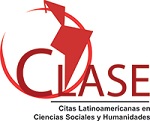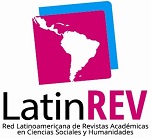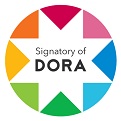Cerebral Dominance of the Students of the Specialty of Philosophy, Social Sciences and Human Relations of the Education Faculty of the National University of Central Peru
DOI:
https://doi.org/10.26490/uncp.horizonteciencia.2021.20.778Keywords:
Cerebral dominance, students, gender, males, womenAbstract
The objective of the research work was to determine the differences in brain dominance between genders; it was used a 40-question questionnaire based on the Herrmann total brain model that was applied to 86 students. The hypothesis test was processed with Pearson's chi square; the results show that there are differences in brain dominance between men and women; in addition, it was determined that 29% of the total students avoid their cerebral dominance. The left and right hemispheres present a Spearman correlation of 0.42; this finding implies that double dominance is unlikely to occur within the left and right hemispheres of the brain.
Downloads
References
Amabile, T. M., & Pratt, M. G. (2016). The dynamic componential model of creativity and innovation in organizations: Making progress, making meaning. Research in Organizational Behavior, 36, 157-183.
Belfo, F. P. (2016). Allocation of Information and Technology Professionals According to Brain Structures. In Handbook of Research on Information Architecture and Management in Modern Organization. (pp. 341-362). IGI Global.
Benziger, I. K. & Sohn, A. (1993). The art of using your whole brain. Rockwall, Texas: Whole Brain
Braidot, N. (2006). Neuromarketing: neuroeconomía y negocios. Nestor Braidot.
Braidot, N. (2008). Neuromanagement. Ediciones Granica.
Campos, A. (2010). Neuroeducación: uniendo las neurociencias y la educación en la búsqueda del desarrollo humano. La Educación. Revista Digital, 143, 1-14.
De Boer, A. L., Coetzee, H. S., & Coetzee, H. (2001). Teaching cataloguing and classification at the University of Pretoria: Thinking preferences of second year students. Libri, 51(2), 114-123.
De la Parra, E. (2004). El modelo HBDI (Herrmann Brain Dominance Instrument) Ed. Grijalbo, México
Freshwater D. (2012). The scholarship of reflective practice [position paper]. Indianapolis, IN: Sigma Theta Tau International.
Freshwater D., Taylor B., & Sherwood G. (2008). International Textbook of Reflective Practice in Nursing.Oxford, UK: Blackwell Publishing.
Gardié, O. (2000). Determinación del perfil de estilos de pensamiento y análisis de sus posibles implicaciones en el desempeño de profesionales universitarios venezolanos. Estudios pedagógicos (Valdivia), (26), 25-38.
Gargallo, B. (2008). Estilos de docencia y evaluación de los profesores universitarios y su influencia sobre los modos de aprender de los estudiantes. Revista Española de Pedagogía, 241, 425–446.
Gazzaniga, M. (1977). Review of the split brain. En M.C. Wittroc (Ed.) The Human brain. Englewood Cliffs: Prentice-Hall, Inc.
Gudiño, V. (2010). Desafío del SXXI: Neurociencia aplicada al Aprendizaje y la Educación. Boletín REDEM.
Herrmann, N. (1995). The creative brain. Lake Lure. North Caroline: The Ned Herrmann Group.
Hervás, M. (2003). Estilos de enseñanza y aprendizaje en escenarios educativos. Grupo Editorial Universitario, Granada (2003).
Khalid, A., Ghani, A., Saleh., S. y Yin, K. (2011). Jordanian Students' Thinking Styles Based on Herrmann Whole Brain Model. International Journal of Humanities and Social Science Vol. 1 No. 9 [Special Issue – July 2011].
Marland, P. W., & Edwards, J. (1986). Students' in-class thinking. Instructional Science, 15(1), 75-88.
Ojeda-Hidalgo, J. F., Mexicano-Ojeda, M. A., & Mosqueda-Rojas, M. Á. (2010). Evolución de las preferencias de pensamiento en alumnos de una carrera de perfil administrativo, en una institución de educación superior en la Región Laja–Bajío. Pistas Educativas, (96), 91-98.
Pizarro, B. N. (2003). Neurociencia y educación. Aula Abierta. Madrid: Ed La MurallaA.
Pourhosein, A. (2012). A match or mismatch between learning styles of the learners and teaching styles of the teachers. Internal Journal Modern Education and Computer Science, 11 (2012), pp. 51-60, 10.5815/ijmecs.2012.11.05
Pozo, J. (2014). Psicología del aprendizaje humano. Adquisición de conocimiento y cambio personal, Morata, Madrid (2014)
Ramsden, P. (1993). Learning to teach in higher education. Routledge, Londres.
Rief, S. F. (1993). How to reach and teach ADD/ADHD children: practical techniques, strategies, and interventions for helping children with attention problems and hyperactivity. West Nyack, NY: Center for Applied Research in Education.
Rojas, G., Salas, R., & Jimenez, C. (2006). Estilos de aprendizaje y estilos de pensamiento entre estudiantes universitarios. Estudios pedagógicos (Valdivia), 32(1), 49-75.
Sayago López, J. L., & Lemos Salazar, L. A. (2008). Evaluación de los estilos de pensamiento en los estudiantes de los grados séptimos, octavos y novenos de la institución educativa Alfonso Jaramillo Gutiérrez de Pereira.
Sperry, R. (1973). Lateral specialization of cerebral function in the surgically separated hemispheres. New York: Academic Press.
Ventura, A. C. y Moscoloni, N. (2015). Estilos de enseñanza y aprendizaje en las aulas universitarias: la dimensión cognitiva y social de la estilística. Psicología,Conocimiento y Sociedad, 5(1), 82–109.
Downloads
Published
Issue
Section
License
Copyright (c) 2021 Gustavo Álvarez, Jorge Arauco, Karina Palomino

This work is licensed under a Creative Commons Attribution-NonCommercial 4.0 International License.
















